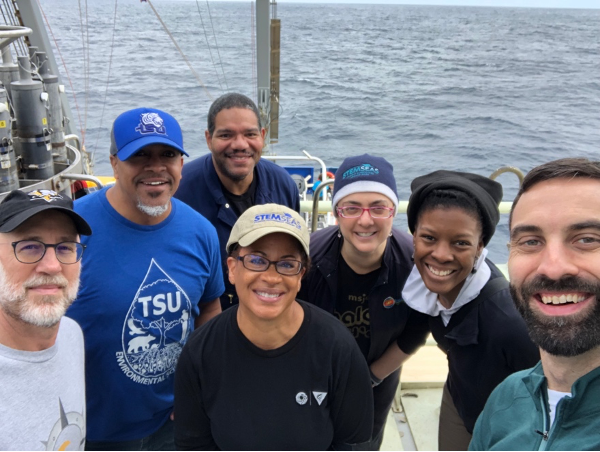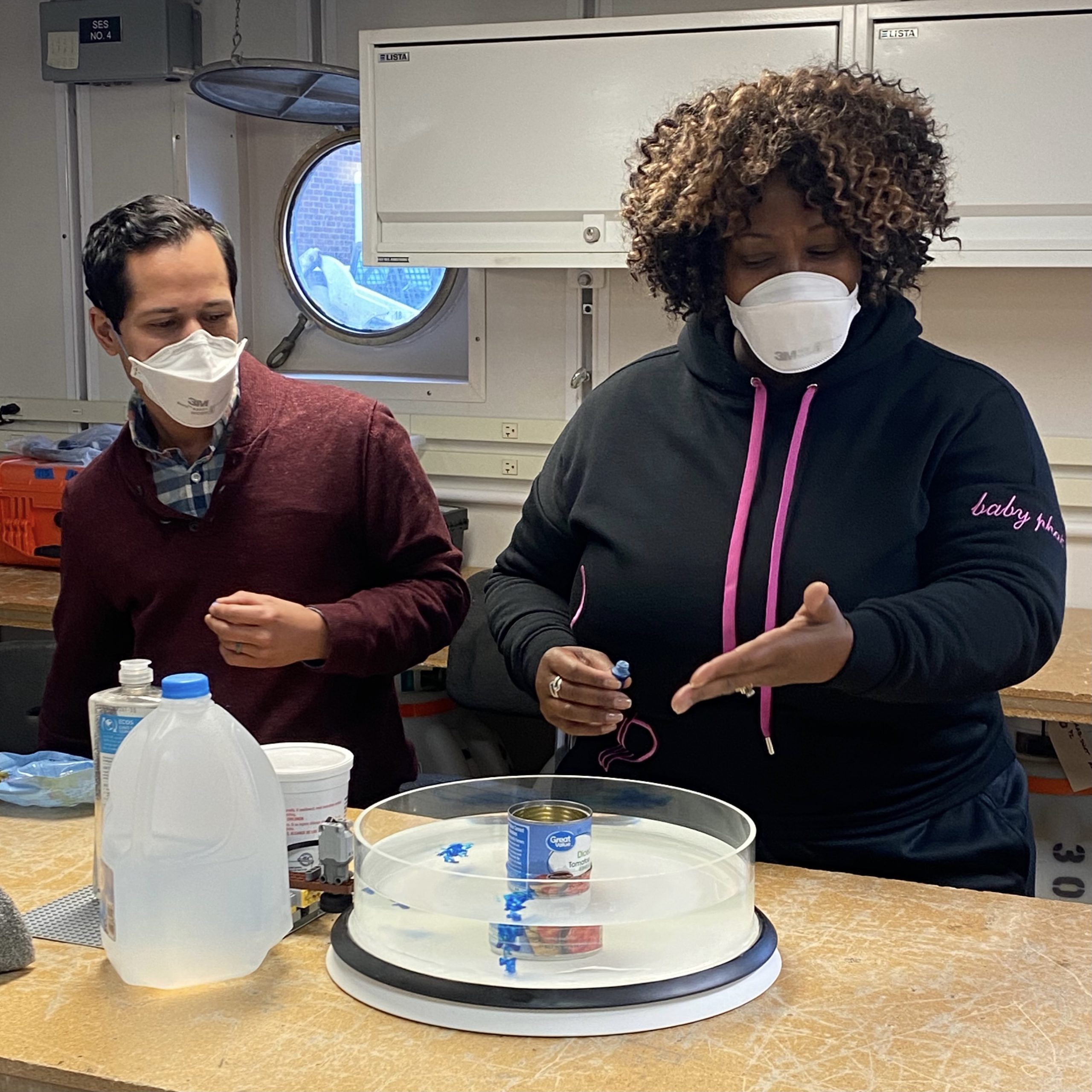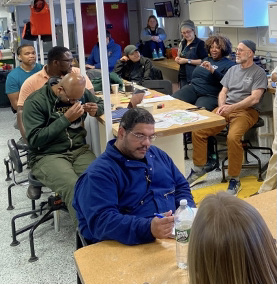OOI Data Classroom at Sea
Ocean Data Labs researcher Sage Lichtenwalner took his data capabilities to the waves, so to speak, as he shared how Ocean Observatories Initiative (OOI) data can be used in the classroom with researchers and teachers aboard the R/V Neil Armstrong in early January. The OOI is funded by the National Science Foundation to collect ocean observations from five scientifically important sites in both the Atlantic and Pacific and make the data available over the internet for research and education.
Lichtenwalner, a research programmer at Rutgers University, was asked to join the cruise as part of an effort to build partnerships and future opportunities between STEMSEAS (Science, Technology, Engineering and Math Student Experiences Aboard Ships) and several Historically Black Colleges and Universities (HBCUs). The cruise was designed to align with STEMSEAS’ objectives and be both immersive and experiential for 12 participants from ten institutions, including six HCBUs. The idea was for faculty to experience the cruise as students on other STEMSEAS expeditions do, and to take back what they learned from their onboard experiences to share with their students and classes. They traveled from Woods Hole, MA to Pensacola, Fla., from January 3-11, 2023.
Lichtenwalner provided participants with practical, hands-on ways to integrate OOI data into their courses. During the eight-day cruise, Lichtenwalner gave four presentations to the group, including a demonstration about how they can use the OOI Data Labs Manual in their classes. “The OOI Data Labs Manual is an easy, accessible way to use real ocean data to teach oceanographic concepts,” he said. “Educators have found that the real-time nature of OOI data inspires students, making them more engaged with the data because of their timeliness and relevance.”
Lichtenwalner’s presentations were part of a series of talks given by the STEMSEAS team and HBCU participants, which included hands-on activities and resources to build students’ problem-solving and scientific thinking skills. Participants also shared their research and teaching strategies to foster collaborative discussions.

Onboard the R/V Neil Armstrong, Dr. Magdalena Andres, a physical oceanographer at Woods Hole Oceanographic Institution and co-Principal Investigator of the PEACH program, which is investigating physical processes that drive exchanges between the shelf and deep ocean at Cape Hatteras, served as chief scientist on the cruise. She put the visiting team to work, helping deploy instruments and make underway measurements as part of the “SWOT Adopt a Crossover Field Campaign—Cape Hatteras.” The project, funded by NASA’s Jet Propulsion Laboratory, falls under the umbrella of the Surface Water Ocean Topography (SWOT) Adopt a Crossover Consortium. Andres is part of a multi-institution research team that has “adopted” the site east of Cape Hatteras near the OOI Mid-Atlantic Bite array site, both to advance the community’s dynamical understanding of this key oceanographic region and to help validate measurements provided by the SWOT satellite which launched in December 2022. “SWOT promises to revolutionize our understanding of earth’s surface water. It’s exciting to have the STEMSEAS, HBCU, and Ocean Data Labs participants working side-by-side with the project’s scientists, engineers, students, and technicians on this forefront of ocean observing,” explained Andres.

While onboard, Andres had the team assist her in deploying current and pressure sensing inverted echo sounders (CPIESs) and XBTs (expendable bathythermographs), as well as collecting measurements with the ship’s CTD (conductivity, temperature, depth) profiler. CTDs measure vertical profiles of conductivity (a proxy for salinity) and temperature. XBTs collect profiles of temperature. CPIESs measure bottom pressure and vertical acoustic travel time data (a proxy for temperature and salinity profiles) and near bottom current measurements (velocity of ocean water). The CPIESs were left in place to collect data over the next 18 months.
In 2024, the OOI Pioneer Array will move to the Mid-Atlantic, not far from where the cruise deployed the CPIES and collected CTD casts. To prepare participants for future potential educational applications of OOI CTDs and other instruments in the area, Lichtenwalner made quick plots of the data collected along the way. “Doing real-time plotting to support operations is actually how I got started in oceanography, so it’s been fun to re-live that experience, while also introducing a new group of professors and educators to the power of using ocean data in real-life and in the classroom.”



